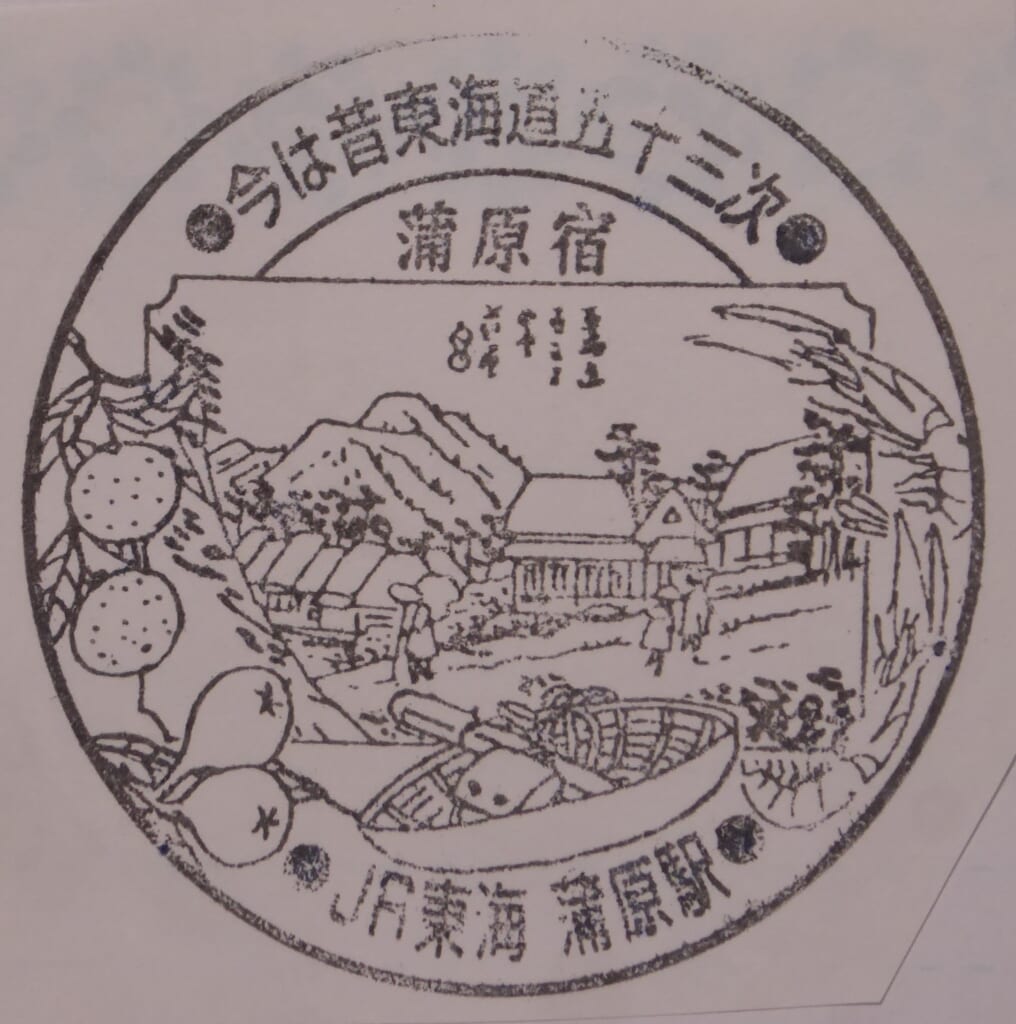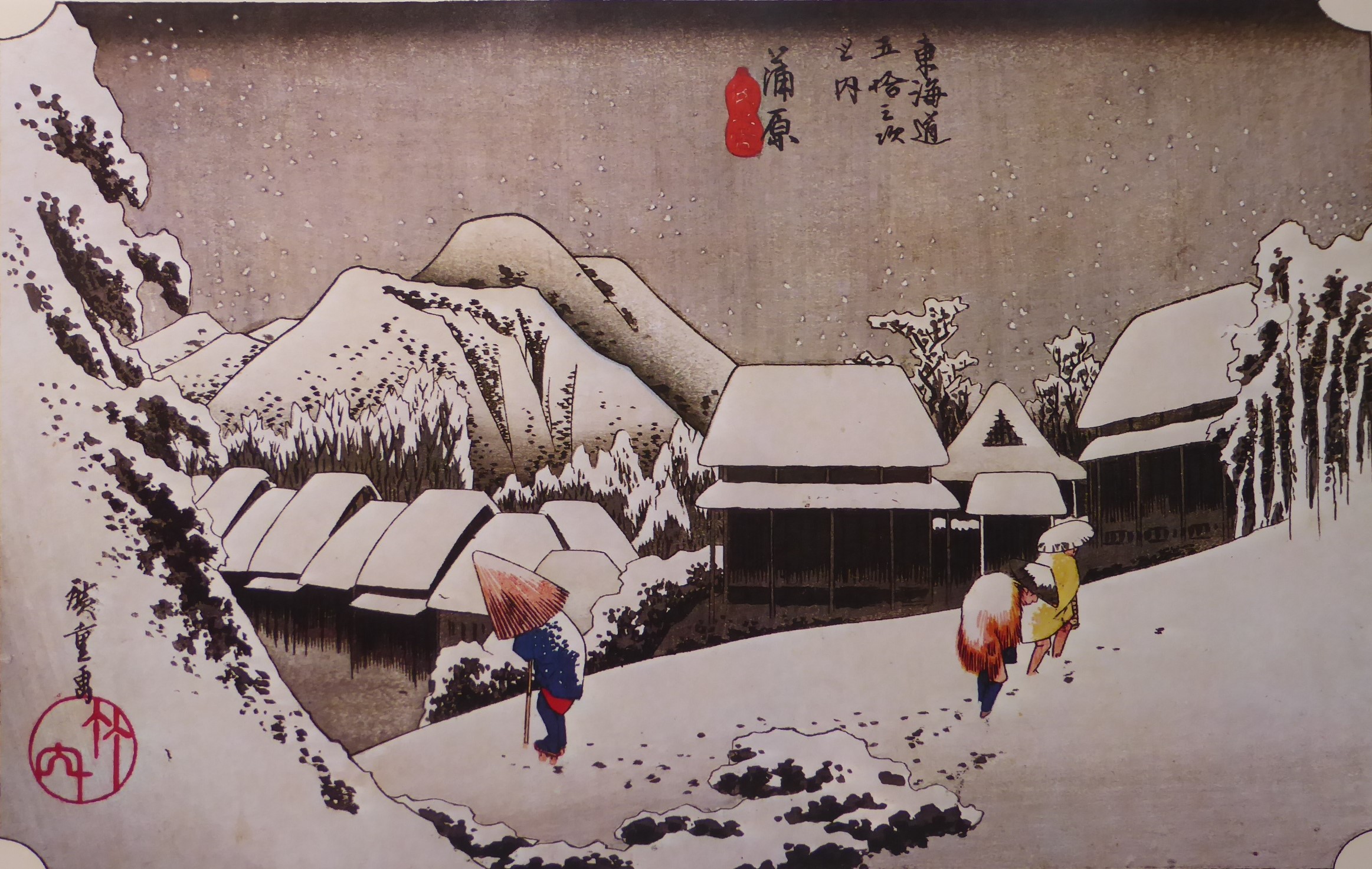Explanation of the Fifty-three Stations of the Tokaido 16 Kanbara
3.9km from Yui to Kanbara, 35°07′12.0″N 138°36′20.0″E
Kanbara is the 15th post station of the Fifty-three Stations of the Tokaido.
It is located in the former Kanbara Town in Shimizu Ward, Shizuoka City, Shizuoka Prefecture.
It is a medium-sized post station with one honjin, three wakihonjin, and 42 yado, a population of 2,480, 509 houses, and a streetscape of about 1,600m long.
It is the first post station you reach after crossing the Fuji River from Yoshiwara.
The Tokai region does not get much snow, but Hiroshige Utagawa’s ukiyo-e “The Fifty-three Stations of the Tokaido” depicts it in snow.
The ancient Tagonoura, a utamakura, is located around here.
This post town was frequented by people who were engaged in the delivery of rice to Edo for the Koshu tax or fishing in Suruga Bay.
There were several rice shops in this post town, as the people did not own land or farm.
Kanbara-juku often took over from the neighboring post town of Yui, which had a smaller population.
To the west, they were sometimes forced to cross Yui and continue on to Okitsu-juku.
The horse-drawn carriages covered a wide area from Yoshiwara-juku to Okitsu-juku.
In addition, the difficult Sattatsu Pass caused the people and horses of Kanbara to become exhausted.
The former Izumiya and the main house of the Shida family residence in Kanbara-juku have also been designated as cultural properties.
In Jippensha Ikku’s humorous book “Tokaido Chu Hizakurige,” there is a story about Yaji and Kita who sneak into a procession of a feudal lord from Kanbara-juku and get a feast.
The name “Tagonoura” is widely known from a waka poem included in the Manyoshu.
When the Man’yoshu was compiled, the ancient Tagonoura was the coastline from the foot of the Satta Pass to around Yui and Kanbara.
There are several poems in the Man’yoshu that include “Tagonoura,” among which the third poem in the Man’yoshu is well known.
Tagonoura Port supported the paper industry in Fuji City. From the 1960s to the 1970s, it was famous nationwide for its sludge pollution control and lawsuits.
The charm of this inn is its retro townscape.
It is the only post town in the prefecture that has been certified as a historic national highway.
There are many things to see, such as the mansion with its distinctive namako wall and the Taisho-era modern architecture that is a mix of Japanese and Western styles.
① “Hoeido version”
Three people are carefully walking down a road in the thick snow at night.
Snow is beginning to accumulate on the hats and straw raincoats they are wearing.
Everything except the people is drawn in black and white to express the loneliness of a snowy night enveloped in silence.
The figures are colored yellow and blue, and are depicted effectively.
The area around Kambara, where the story takes place, is not originally a snowy region.
This was painted as one of a set of snowy landscapes.
Along with White Rain at Shono, this is the best of the Hoeido versions.
It is the best snowy landscape of all of Hiroshige’s works.
②”Gyousyo version”
It depicts the Fuji River and Mt. Fuji.
Two komuso monks and a shugendo monk are talking in front of a willow tree by the river.
③ “Reisho version”
It depicts two ferries in a landscape of the Fuji River.
④ “Hokusai version”
It depicts people collecting seawater on the beach.
⑤ “Travel image”
It is a guide to events in Kanbara. It is very blurry. It’s a shame.
⑥ “Stamp image”
It is a stamp from JR Kanbara Station.
Hoeido version
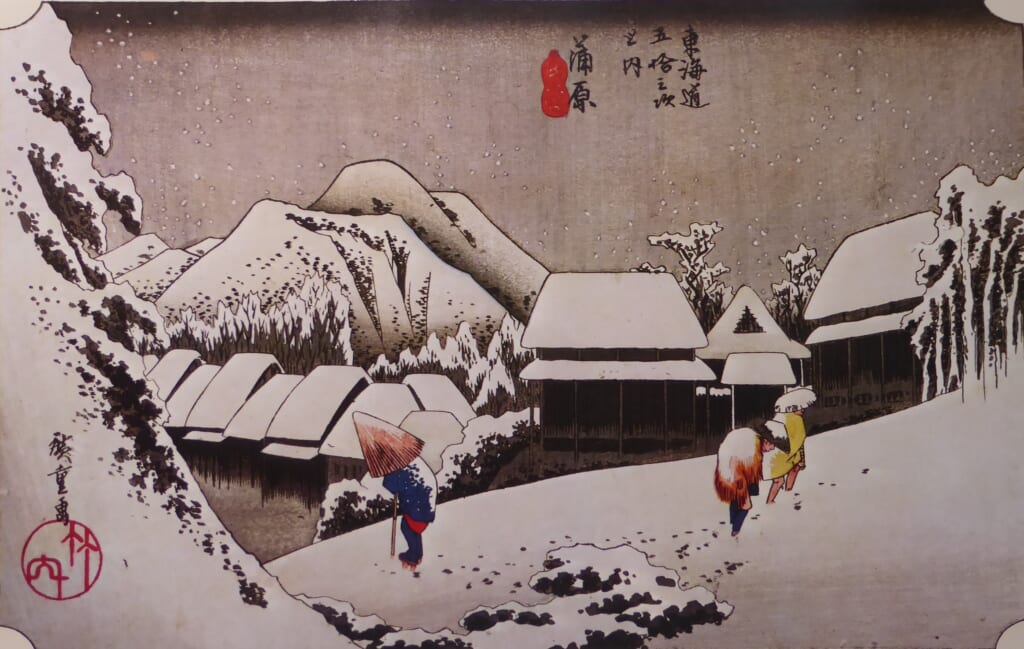
Gyousyo version
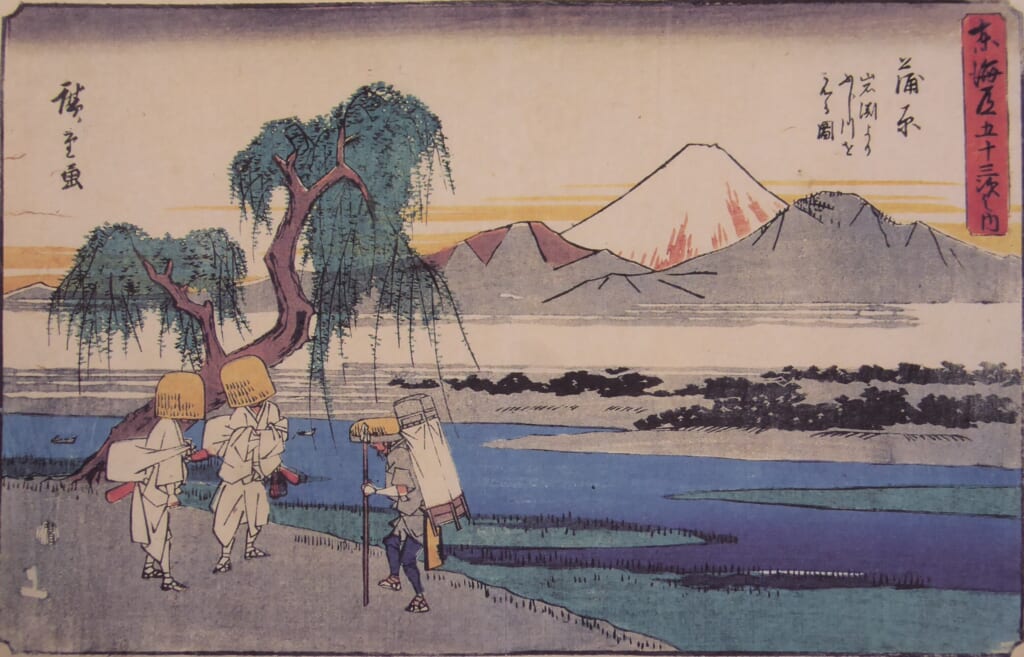
Reisho version
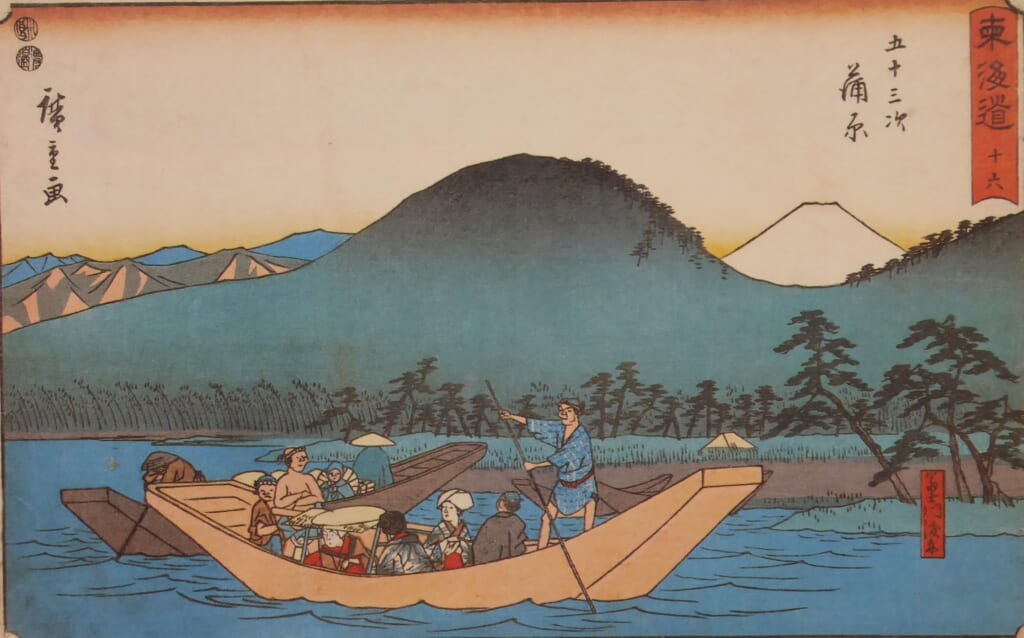
Hokusai version
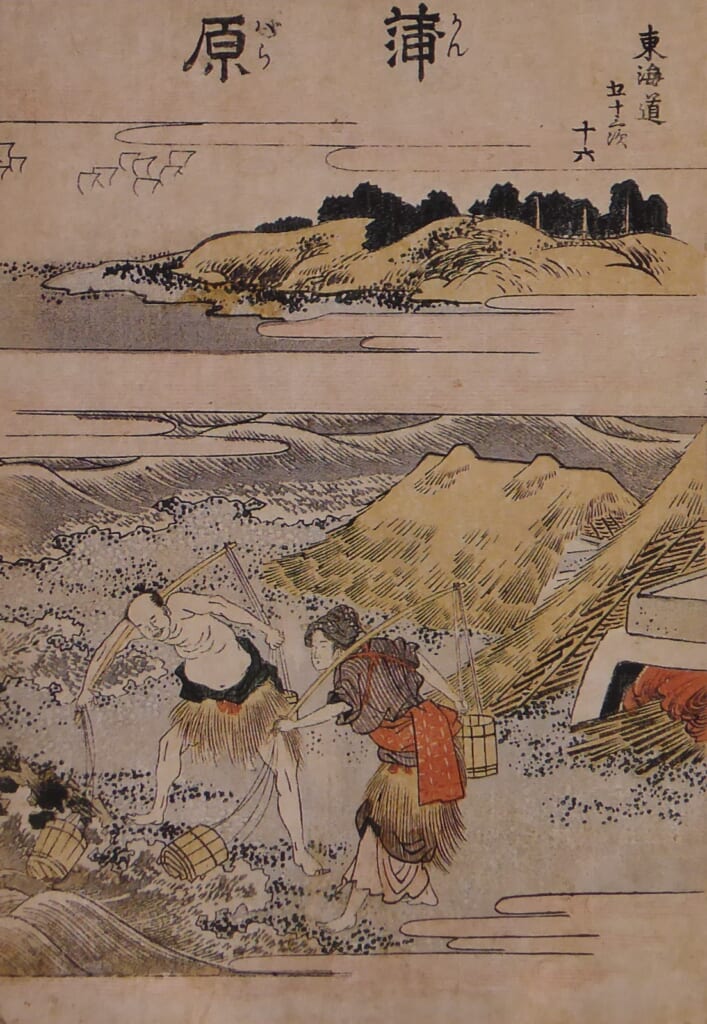
Travel image
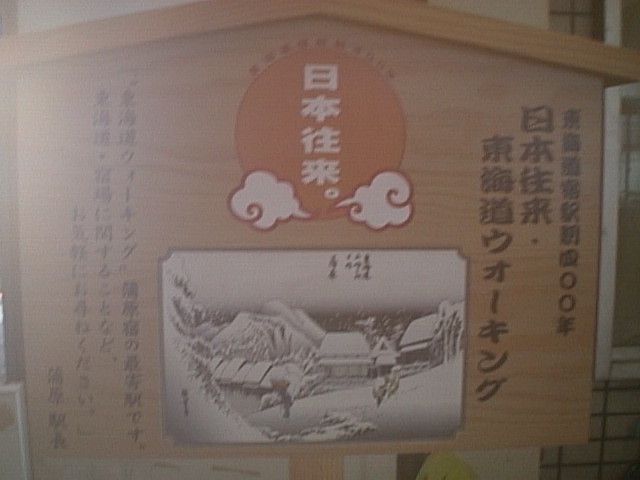
Stamp image
